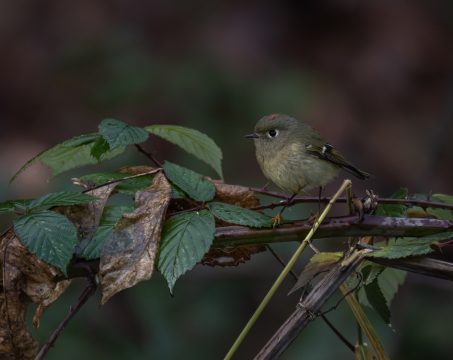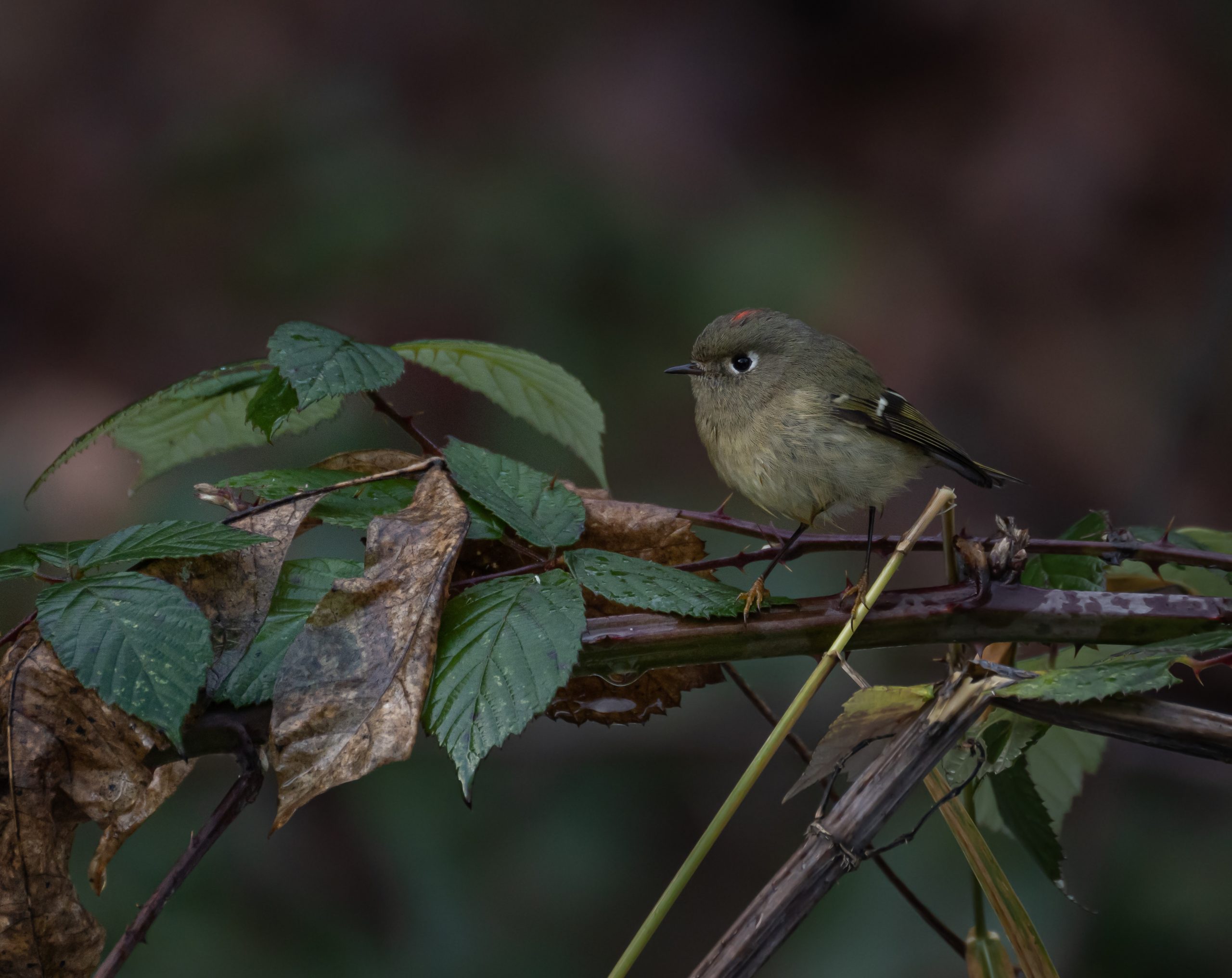Bird of the week: Ruby-crowned Kinglet
About: This tiny (5 – 10 grams) gray-green bird is a real treat to see. When foraging, they frequently flick their wings as they frantically forage in low-hanging branches. Their white eye ring and wing bar add to their outfit and the males have a bright red crown that is usually hidden, but is raised when they start excitedly singing in spring.
Where to find this bird: Look for this bird in low-to-medium-level foliage anywhere on campus. They like to hang with other birds like chickadees and warblers.
When to find this bird: April through May and mid-September -through early November
Fun fact: Ruby-crowned Kinglets lay large clutches of up to 12 eggs in a nest. Though each egg weighs only a fiftieth of an ounce, the entire clutch can weigh as much as the female.

48 Bird Species in 3 Hours: A Glimpse into Global Big Day
The two times of year that are most exciting for the birding community are spring and fall, when billions of birds around the globe migrate from their wintering to summering grounds and back again. Every October, birders celebrate the fall migration with Global Migratory Bird Day and the fall Global Big Day (GBD) put on by Cornell Lab’s eBird. This year’s 33,000 participants came together on October 14 for the fall GBD trying to record as many birds as possible into eBird’s database.
I, of course, was one of these birders. Unfortunately for me, I do not get off of school during bird migration – like I should – so I only had a few hours to get out. My brother Ben, my friend Ross and I headed out at 7:30 on our bikes and went to Buboltz nature preserve. We like to do as much birding as possible on our bikes as this adds an additional fun challenge to our bird outings. We started out at Buboltz with a few small flocks of passerines including a late Blue-headed Vireo, which is my favorite vireo species. A large number of sparrows made a good showing for us with White-throated, Fox, Swamp and White-crowned all appearing. Wind makes songbirds less active, so as the wind picked up, our sightings decreased. We moved on to the Thrivent ponds, which boasted over a thousand geese and ducks. Most were expected species like Mallard, Shoveler and Canada Geese, but we were able to spot a Black Duck and a Northern Pintail, which are harder to come by. We also picked up a late Broad-winged Hawk, which circled over us briefly before heading south. We called it a day around 10:30 with 48 species; not bad for two spots and 3 hours of birding.
Three hours doesn’t make it a real birding big day, but for GBD, you need to get out for as long as you can. For a “real” big day, you go out as long as you can and, if you’re doing an extreme big day, you go non-stop for 24 hours and typically drive across a large county or even an entire state. I’ve done a number of these, though I have yet to go 24 hours straight. These days, I am most interested in doing big days by bike as it takes thoughtful planning to get a good route. People also do big days from a single spot at times, making it a “big sit” which is just a little too much standing around for my taste, though I have done this a few times. Big days are not for everyone, but it’s a fun way to bird if you’re into the competition or just want to see what it’s like taking something to the extreme.
Global Big Day does not require this sort of extreme participation, though; it is a collective effort that can be taken in whatever way you want. Whether you just have five minutes or want to pull 24 hours of birding, your contribution goes to a team effort to document the wonders of fall migration. As winter comes closer, I’ll start dreaming about what I may do for Spring’s Global Big Day – Maybe I should do 24 hours next year?
Have questions for our birder? Ask them here!

